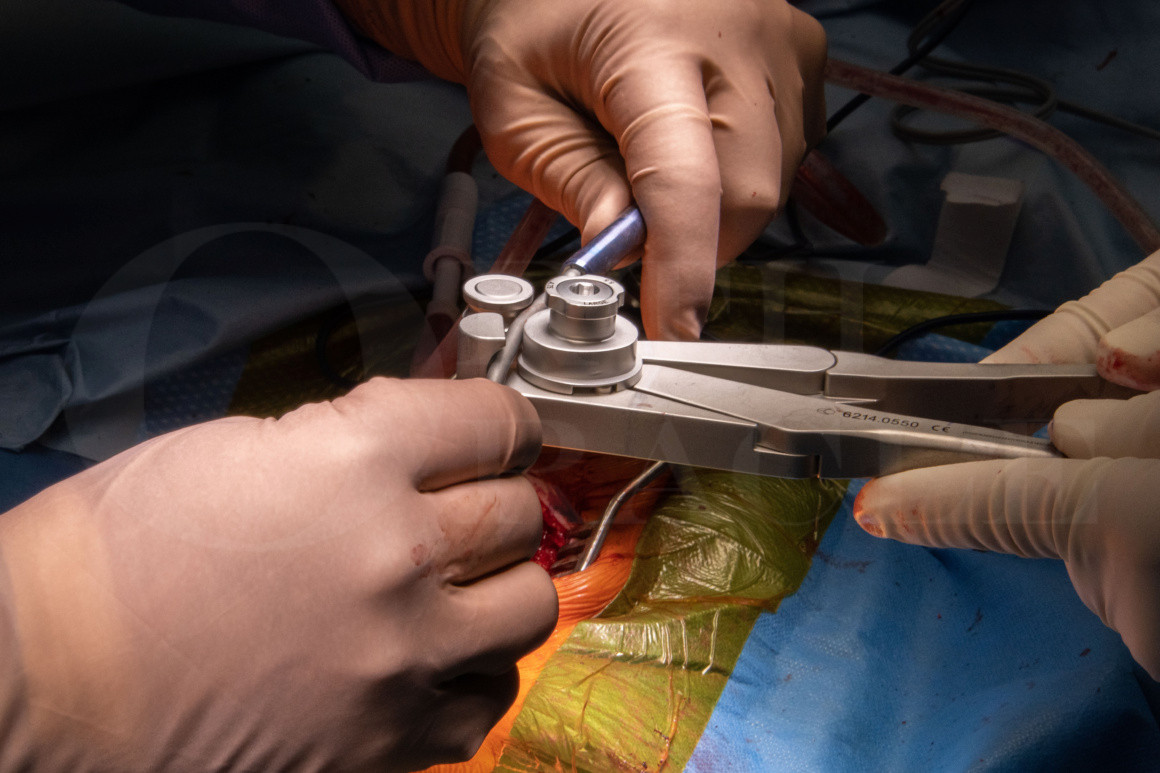Scoliosis: Insertion of spinal traditional growing rods( Globus Marvel growing rod system) for early onset scoliosis
Overview

Subscribe to get full access to this operation and the extensive Spine Surgery Atlas.
Learn the Scoliosis: Insertion of spinal traditional growing rods( Globus Marvel growing rod system) for early onset scoliosis surgical technique with step by step instructions on OrthOracle. Our e-learning platform contains high resolution images and a certified CME of the Scoliosis: Insertion of spinal traditional growing rods( Globus Marvel growing rod system) for early onset scoliosis surgical procedure.
Scoliosis is a rotational deformity of the spine resulting in a lateral curvature. If it occurs before a child is 10 years old, it is termed early onset scoliosis (EOS). This incorporates the traditional terms of infantile scoliosis in 0-3 yrs old age group and juvenile scoliosis in 3-10 yrs old, and reflects the different management principles required to treat it when compared to late onset scoliosis in older children.
It is an uncommon diagnosis with a prevalence of around 0.08%. It will normally be identified by the child’s carers or a healthcare professional who may find an asymmetry in the spine, shoulder imbalance or sitting imbalance. The underlying aetiology may be idiopathic (no specific cause) or can be related to neuromuscular conditions, syndromal scoliosis or congenital abnormalities. It is also associated with previous surgery involving the chest wall, such as for congenital cardiac disease. Once identified, it is monitored over the course of years for any progression, and treated accordingly. Treatment will depend on the location and magnitude of the curve, rate of progression, underlying aetiology, medical co-morbidities and the wishes of the patient and their family. Whilst most EOS curves are treated conservatively, some progressive curves will require plaster jacket, brace therapy or surgery.
The most common operation for scoliosis in older children is to perform a posterior scoliosis correction with fusion of the spine. However, in children with early onset scoliosis, the chest is still developing and performing a fusion operation could result in a smaller thoracic height which can be associated with respiratory impairment and risk of premature death; this is called thoracic insufficiency syndrome. Alveoli are known to develop until 7 yrs old, then hypertrophy thereafter. Maintaining chest wall compliance and maximising the thoracic height during this period of early growth must be balanced against controlling a progressive scoliosis in order to reduce long-term disability.
In order to allow ongoing growth whilst controlling the scoliosis, ‘growth-friendly’ implant systems have been developed. These can be distraction-based, compression-based, or growth-guidance and the details of these are discussed later in this technique. The patient involved here has distraction-based growing rods inserted; examples of this type of method include traditional growth rods and magnetically-controlled growing rods. Screws (or hooks) are inserted at the cranial and caudal extent of the deformity and rods then inserted between them. As the rods are inserted, a partial correction of the scoliosis is achieved but the patient does need to return to the operating theatre every six months for routine lengthening of the rods as they continue to grow. Since the rods are spanning a mobile section of the spine, there is a much higher complication rate using growing rods than following a fusion procedure; this could include rod breakage, screw or hook loosening, or junctional kyphosis and other deformity. Since the complication rate will increase with duration of time that the implants have been in situ, it is important to attempt to avoid surgery until they are as old as possible and ensure all non-operative measures have been used. Once the child has grown to a satisfactory thoracic height, the growing construct can be revised to a definitive scoliosis fusion (or scoliosis correction) which will then stop that section of the spine changing position or growing; they would normally need to be at least 9 years old to have achieved sufficient height.
OrthOracle readers will also find the following instructional operative techniques of interest:
Scoliosis correction(neuromuscular): Anterior release and apical corpectomy
EDF(Elongation-Derotation-Flexion)/Mehta casting for Early Onset Scoliosis
T11 to L3 anterior scoliosis correction and fusion with the Globus Anterior Staple System
Anterior release of scoliosis (access by thoracotomy)
Author: Mr Stephen Morris FRCS (Tr & Orth).
Institution: Avon Orthopaedic Centre, Southmead Hospital, Bristol
Clinicians should seek clarification on whether any implant demonstrated is licensed for use in their own country.
In the USA contact: fda.gov
In the UK contact: gov.uk
In the EU contact: ema.europa.eu



















